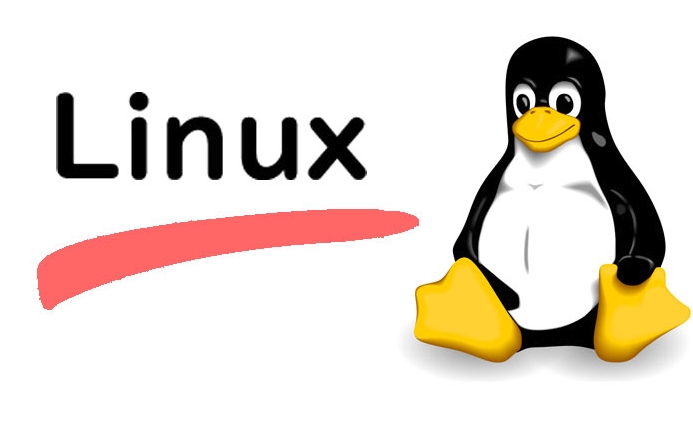Linux servers have obvious advantages over Windows servers in terms of flexibility, cost and performance. First, Linux can provide better performance on low-end hardware because it occupies less resources and can choose from lightweight systems such as Alpine Linux; second, it provides higher customization and control rights, and supports replacement of package managers and service components; third, built-in command line tools and scripts support greatly simplifying automation tasks; fourth, its open-source security and stability design ensures long-term operation and policy control; finally, although Windows has advantages in specific scenarios such as .NET applications, Linux is still the preferred solution for web hosting, cloud computing and back-end services.

Linux servers have clear advantages in certain scenarios compared to Windows servers, especially when it comes to flexibility, cost, and performance. If you're running infrastructure that needs stability, customization, or resource efficiency, Linux is often the go-to choice.

Better Performance on Lower-End Hardware
One of the most practical benefits of using a Linux server is how efficiently it runs, even on older or less powerful hardware. Unlike Windows Server, which tends to require more system resources just to run the OS, Linux can be configured to use minimal RAM and CPU while still handling heavy workloads.

- You can install a lightweight distribution like Alpine Linux or Debian with minimal packages.
- GUI isn't required by default — this saves memory and processing power.
- Resource-heavy background services are optional, not baked into the system.
This makes Linux ideal for cloud environments where you want to maximize performance without overspending on compute resources.
Greater Customization and Control
Linux gives you full control over the system. You're not locked into a specific interface or set of tools. Most components, from the kernel to user-level applications, can be swapped out or reconfigured.

- You can choose your own package manager (like apt, yum, or pacman).
- Swap out default services for alternatives (eg, using Nginx instead of Apache).
- Modify the kernel behavior if needed for performance tuning.
This level of control means you can tailor the server exactly to your application's needs, something that's much harder to achieve with Windows Server.
Built-in Command Line Tools and Scripting Support
The command line in Linux isn't just an alternative — it's the primary way of managing systems. It comes packed with powerful tools that make automation and troubleshooting easier.
- Tools like grep, awk, sed, and cron simplify log analysis and task automation.
- Bash scripting is deeply integrated and widely supported.
- Remote management via SSH is straightforward and secure.
Many DevOps workflows rely heavily on these tools, making Linux a better fit for CI/CD pipelines and automated deployments.
Security and Stability Out of the Box
Linux has a strong reputation for security and uptime. Since it's open source, vulnerabilities are often identified and patched quickly by the community.
- Default installations are lean and don't include unnecessary services.
- Granular permission controls and SELinux/AppArmor help enforce policies.
- Servers can run for months or even years without rebooting.
While Windows Server has improved its security features, the nature of Linux's design and ecosystem still gives it an edge in environments where downtime and breaches are critical concerns.
These points don't mean Linux is always better — Windows has strengths in areas like integration with Microsoft products or running .NET applications. But for most web hosting, cloud computing, and backend services, Linux offers distinct advantages that are hard to ignore.
Basically that's it.
The above is the detailed content of What are the advantages of a Linux server over a Windows server?. For more information, please follow other related articles on the PHP Chinese website!

Hot AI Tools

Undress AI Tool
Undress images for free

Undresser.AI Undress
AI-powered app for creating realistic nude photos

AI Clothes Remover
Online AI tool for removing clothes from photos.

Clothoff.io
AI clothes remover

Video Face Swap
Swap faces in any video effortlessly with our completely free AI face swap tool!

Hot Article

Hot Tools

Notepad++7.3.1
Easy-to-use and free code editor

SublimeText3 Chinese version
Chinese version, very easy to use

Zend Studio 13.0.1
Powerful PHP integrated development environment

Dreamweaver CS6
Visual web development tools

SublimeText3 Mac version
God-level code editing software (SublimeText3)
 Install LXC (Linux Containers) in RHEL, Rocky & AlmaLinux
Jul 05, 2025 am 09:25 AM
Install LXC (Linux Containers) in RHEL, Rocky & AlmaLinux
Jul 05, 2025 am 09:25 AM
LXD is described as the next-generation container and virtual machine manager that offers an immersive for Linux systems running inside containers or as virtual machines. It provides images for an inordinate number of Linux distributions with support
 How to troubleshoot DNS issues on a Linux machine?
Jul 07, 2025 am 12:35 AM
How to troubleshoot DNS issues on a Linux machine?
Jul 07, 2025 am 12:35 AM
When encountering DNS problems, first check the /etc/resolv.conf file to see if the correct nameserver is configured; secondly, you can manually add public DNS such as 8.8.8.8 for testing; then use nslookup and dig commands to verify whether DNS resolution is normal. If these tools are not installed, you can first install the dnsutils or bind-utils package; then check the systemd-resolved service status and configuration file /etc/systemd/resolved.conf, and set DNS and FallbackDNS as needed and restart the service; finally check the network interface status and firewall rules, confirm that port 53 is not
 How would you debug a server that is slow or has high memory usage?
Jul 06, 2025 am 12:02 AM
How would you debug a server that is slow or has high memory usage?
Jul 06, 2025 am 12:02 AM
If you find that the server is running slowly or the memory usage is too high, you should check the cause before operating. First, you need to check the system resource usage, use top, htop, free-h, iostat, ss-antp and other commands to check CPU, memory, disk I/O and network connections; secondly, analyze specific process problems, and track the behavior of high-occupancy processes through tools such as ps, jstack, strace; then check logs and monitoring data, view OOM records, exception requests, slow queries and other clues; finally, targeted processing is carried out based on common reasons such as memory leaks, connection pool exhaustion, cache failure storms, and timing task conflicts, optimize code logic, set up a timeout retry mechanism, add current limit fuses, and regularly pressure measurement and evaluation resources.
 Install Guacamole for Remote Linux/Windows Access in Ubuntu
Jul 08, 2025 am 09:58 AM
Install Guacamole for Remote Linux/Windows Access in Ubuntu
Jul 08, 2025 am 09:58 AM
As a system administrator, you may find yourself (today or in the future) working in an environment where Windows and Linux coexist. It is no secret that some big companies prefer (or have to) run some of their production services in Windows boxes an
 How to Burn CD/DVD in Linux Using Brasero
Jul 05, 2025 am 09:26 AM
How to Burn CD/DVD in Linux Using Brasero
Jul 05, 2025 am 09:26 AM
Frankly speaking, I cannot recall the last time I used a PC with a CD/DVD drive. This is thanks to the ever-evolving tech industry which has seen optical disks replaced by USB drives and other smaller and compact storage media that offer more storage
 How to find my private and public IP address in Linux?
Jul 09, 2025 am 12:37 AM
How to find my private and public IP address in Linux?
Jul 09, 2025 am 12:37 AM
In Linux systems, 1. Use ipa or hostname-I command to view private IP; 2. Use curlifconfig.me or curlipinfo.io/ip to obtain public IP; 3. The desktop version can view private IP through system settings, and the browser can access specific websites to view public IP; 4. Common commands can be set as aliases for quick call. These methods are simple and practical, suitable for IP viewing needs in different scenarios.
 How to Install NodeJS 14 / 16 & NPM on Rocky Linux 8
Jul 13, 2025 am 09:09 AM
How to Install NodeJS 14 / 16 & NPM on Rocky Linux 8
Jul 13, 2025 am 09:09 AM
Built on Chrome’s V8 engine, Node.JS is an open-source, event-driven JavaScript runtime environment crafted for building scalable applications and backend APIs. NodeJS is known for being lightweight and efficient due to its non-blocking I/O model and
 How to Setup MySQL Replication in RHEL, Rocky and AlmaLinux
Jul 05, 2025 am 09:27 AM
How to Setup MySQL Replication in RHEL, Rocky and AlmaLinux
Jul 05, 2025 am 09:27 AM
Data replication is the process of copying your data across multiple servers to improve data availability and enhance the reliability and performance of an application. In MySQL replication, data is copied from a database from the master server to ot






